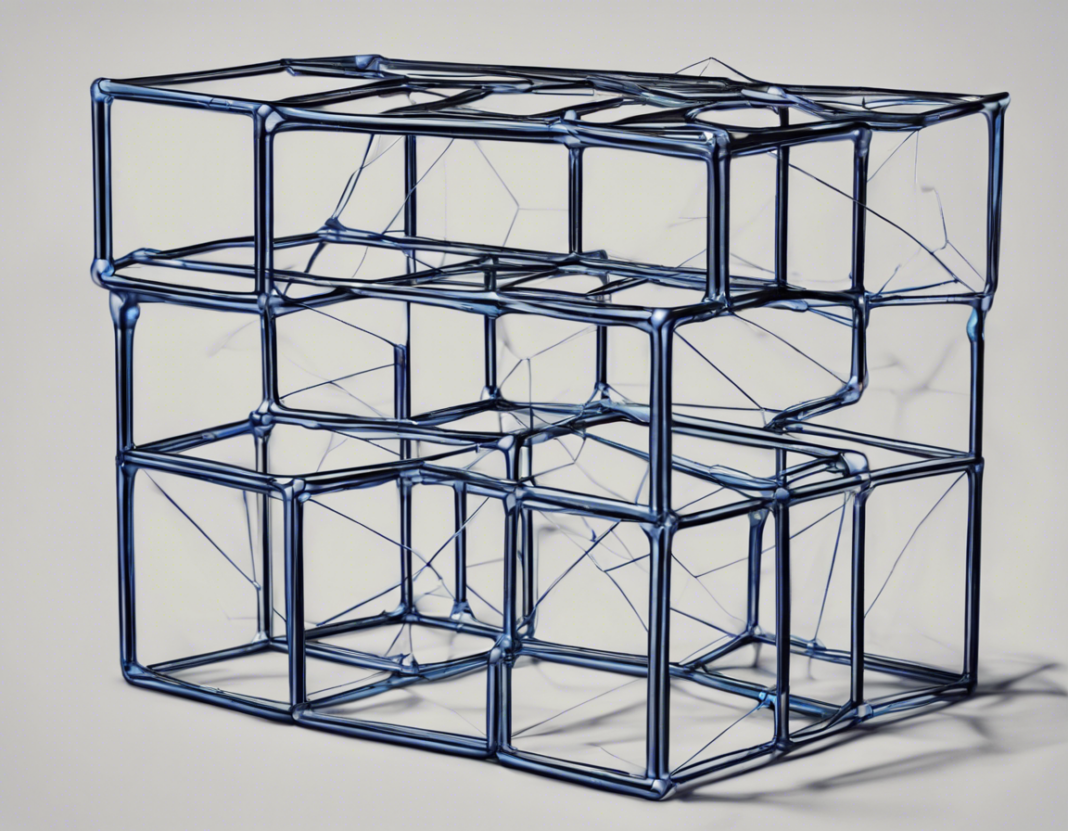When it comes to geometric shapes, understanding their properties, dimensions, and characteristics is fundamental. In the realm of three-dimensional shapes, a cuboid is one of the most commonly encountered figures. With its six faces, twelve edges, and eight vertices, the cuboid offers a simple yet essential geometric structure that has a wide range of applications in mathematics, engineering, architecture, and everyday life.
Overview of a Cuboid
A cuboid, also known as a rectangular prism, is a three-dimensional shape characterized by six rectangular faces. These faces are arranged in pairs of three, with each pair being parallel to each other. The cuboid is unique in that all its angles are right angles, making it a type of orthogonal parallelepiped. The defining feature of a cuboid is that its opposite faces are equal in size and shape.
Dimensions and Properties
The dimensions of a cuboid are defined by its length, width, and height. These three measurements determine the size and proportions of the cuboid. The formulas for calculating the volume and surface area of a cuboid are as follows:
- Volume = Length × Width × Height
- Surface Area = 2 × (Length × Width + Width × Height + Height × Length)
Vertices of a Cuboid
The vertices of a cuboid refer to its corner points where the edges meet. A cuboid has a total of eight vertices, which are represented by coordinates in three-dimensional space. These vertices play a crucial role in defining the shape and structure of the cuboid. Knowing the location of the vertices is essential for various calculations and geometric manipulations involving cuboids.
Coordinates of the Vertices
In a standard Cartesian coordinate system, the eight vertices of a cuboid can be identified based on their x, y, and z coordinates. By convention, the vertices of a cuboid are often labeled using letters (A, B, C, D, E, F, G, H) to differentiate them. The coordinates of the vertices of a cuboid with sides of lengths a, b, and c are given by:
- Vertex A: (0, 0, 0)
- Vertex B: (a, 0, 0)
- Vertex C: (a, b, 0)
- Vertex D: (0, b, 0)
- Vertex E: (0, 0, c)
- Vertex F: (a, 0, c)
- Vertex G: (a, b, c)
- Vertex H: (0, b, c)
Visualization of Vertices
Visualizing the vertices of a cuboid in three-dimensional space helps in understanding its spatial orientation and structural composition. By connecting the vertices with edges, the complete shape of the cuboid can be visualized in a geometric diagram. This representation highlights the symmetry and geometry of the cuboid, showcasing how the vertices dictate the shape of the figure.
Applications of Cuboids
Cuboids have numerous practical applications across various disciplines. In geometry, they serve as fundamental shapes for understanding concepts like volume, surface area, and spatial relationships. In architecture, cuboids are commonly used to represent building structures and room dimensions. In packaging and carpentry, cuboids are essential for designing boxes, containers, and furniture pieces.
Importance of Understanding Vertices
Understanding the concept of vertices in a cuboid is crucial for accurately defining its shape, volume, and dimensions. By knowing the coordinates of the vertices, one can perform calculations related to surface area, diagonal lengths, and geometric transformations. Moreover, vertices play a vital role in visualizing and interpreting the spatial arrangement of a cuboid in mathematical contexts.
Practical Example:
Let’s consider a real-world scenario where understanding the vertices of a cuboid is essential. Imagine you are an interior designer tasked with designing a cuboid-shaped room for a client. By knowing the coordinates of the vertices, you can accurately plan the layout, furniture placement, and spatial organization of the room. This knowledge allows you to optimize the use of space and create a visually appealing design for your client.
Frequently Asked Questions (FAQs) About Cuboids
- What is the difference between a cuboid and a cube?
-
A cuboid is a three-dimensional shape with six rectangular faces, while a cube is a special type of cuboid where all six faces are square and all edges are equal in length.
-
How do you calculate the diagonal of a cuboid?
-
The diagonal of a cuboid can be calculated using the formula: Diagonal = √(Length² + Width² + Height²).
-
Can a cuboid have all edges of different lengths?
-
Yes, a cuboid can have all edges of different lengths, as long as the opposite edges are equal in pairs.
-
What is the Euler’s formula for a cuboid?
-
Euler’s formula for a cuboid states: Vertices + Faces – Edges = 2.
-
Are all parallelepipeds cuboids?
-
No, not all parallelepipeds are cuboids. While a cuboid is a type of parallelepiped, not all parallelepipeds have right angles or equal opposite faces.
-
How are cuboids used in the field of mathematics?
-
In mathematics, cuboids are used for teaching basic geometry, calculating volumes of objects, and understanding spatial relationships in three dimensions.
-
What is the relationship between a cuboid and a rectangular prism?
-
A cuboid is the same as a rectangular prism, as both terms refer to a three-dimensional shape with rectangular faces and right angles.
-
Can a cuboid have a volume of zero?
-
No, a cuboid cannot have a volume of zero unless at least one of its dimensions (length, width, height) is also zero.
-
What role do vertices play in defining the symmetry of a cuboid?
-
The vertices of a cuboid help establish its symmetry by determining the points of intersection where the edges meet at right angles.
-
How can I calculate the space diagonal of a cuboid?
- The space diagonal of a cuboid can be calculated using the formula: Space Diagonal = √(Length² + Width² + Height²).
In conclusion, understanding the vertices of a cuboid is essential for grasping its structural integrity, spatial geometry, and mathematical significance. By recognizing the role of vertices in defining the shape and orientation of a cuboid, individuals can enhance their geometric knowledge and practical applications of this fundamental three-dimensional shape.






